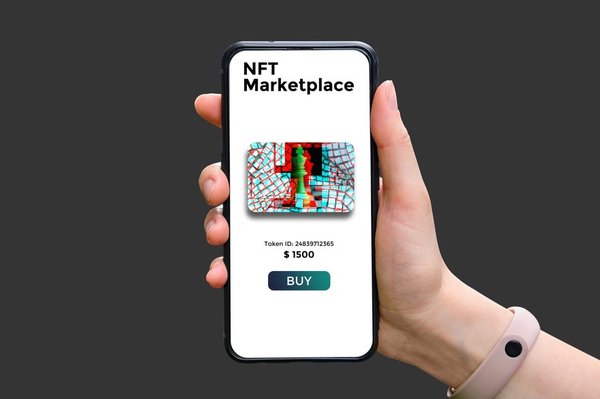Clone X is a collaboration between design studio RTFKT and Japanese contemporary artist Takashi Murakami. The studio and Murakami worked together to create a line of Clones, each one referred to as a Clone X, which are digital avatars bought and sold as non-fungible tokens (NFTs).

This was Murakami's second NFT project, and while the first was unsuccessful, he had better luck with Clone X. Within weeks of launching, multiple Clones sold for more than $1 million worth of Ethereum (CRYPTO:ETH). Although Clone X NFTs are popular with digital art collectors, investors should steer clear. We'll explain why in this guide.
What makes Clone X-X Takashi Murakami unique?
The Clone X NFT collection consists of 20,000 digital avatars that have anime-style designs. There are eight DNA types and more than 300 traits, with a Clone's DNA determining its rarity.
There are a few things that make Clone X NFTs special, and it starts with the creator. Murakami is a well-known artist whose work often fetches high prices. For fans of Murakami and his art style, the Clone X collection is a way to own one of his digital pieces.
Diversity is another part of why the Clone X collection has been successful. There are Clones available in a variety of skin tones and races. Some of the rarest Clones even have the skin condition vitiligo.
A Clone X is also a way to enter the RTFKT ecosystem. RTFKT focuses on metaverse products, such as digital wearables. Owners of Clone X NFTs can get special benefits with RTFKT, including access to real-world events and early opportunities to buy NFTs from new collections.
Where Clone X-X Takashi Murakami came from
The organization behind Clone X, RTFKT, was founded by Benoit Pagotto, Chris Le, and Steven Vasilev in January 2020. It started with digital sneakers and then began launching more digital fashion projects, including wearables in Decentraland (CRYPTO:MANA), a virtual world.
RTFKT announced the Akira Project in August 2020, which would offer next-gen avatars that are ready for the metaverse. The Akira Project was later revealed to be Clone X, a collaboration with Murakami.
Clone X launched with a presale on Nov. 27 and a public sale on Nov. 29, 2021. Issues arose during the public sale when the RTFKT website was overloaded and people flooded the organization's Discord chat. RTFKT paused the sale after about two hours and restarted it the next day, when it sold out in less than an hour.
How Clone X-X Takashi Murakami works
Clone X avatars are NFTs stored on the Ethereum blockchain as ERC-721 tokens. There are 20,000 Clone X NFTs in the collection, and each Clone has one of eight DNA types:
- Human
- Robot
- Angel
- Demon
- Reptile
- Undead
- Murakami
- Alien
The avatars are designed to be used in the metaverse. RTFKT created a Clone.meta vault to give owners access to 3D files they can use across metaverse platforms. Owners can also get wearables for their Clones from RTFKT.
Connections
Before working with Murakami, RTFKT partnered with other artists for NFT collections. One of its first major projects was a digital sneaker collaboration with artist FEWOCiOUS, and it followed that up with another digital sneaker partnership, this time with streetwear designer Jeff Staple.
RTFKT's work was enough to get the attention of Nike (NYSE:NKE). The athletic apparel giant acquired RTFKT in December 2021 as part of a plan to expand its digital brand. Nike and RTFKT released the brand's first digital sneakers, called Nike Cryptokicks, in April 2022.
Unique risks
The issue with investing in NFTs is that they generally don't have any real-world utility, and that makes them speculative investments. You can use your Clone X NFT in the metaverse, but the value of that is subjective. If you buy one of these NFTs as an investment, you're relying on the brand's popularity.
Clone X NFTs are even riskier than the typical NFT because of how much they cost. While they were originally sold for three ETH, the floor price was more than 10 ETH as of May 2022, which works out to more than $20,000 in cryptocurrency to buy a Clone X. If prices don't increase, you could lose a significant amount of money. Even if prices rise, every Clone X is different, so to make money, you'd need to find a buyer who wants your specific NFT. Selling NFTs for a profit isn't always easy, especially NFTs that have a high upfront cost.
Is a Clone X a good investment?
A Clone X isn't a good investment due to the expensive prices and the high risk of losing money.
Clone X NFTs are ultimately a type of digital collectible. As investments, digital collectibles are very similar to physical collectibles, such as sports cards or Beanie Babies. Their prices are unpredictable and depend on the whims of the market. If you're lucky, you buy before prices go up, but you never want to rely on luck as an investing strategy.
There are reasons to be positive about this line of NFTs. RTFKT has released several popular collections and is now working with Nike, plus being a Clone X owner could get you early access to the studio's new drops. Murakami's art is extremely popular, and that includes his NFT art.
Those would be points worth considering if these NFTs cost less, but they don't. For most investors, $20,000 or more is no small sum, and it’s definitely not an amount to tie up in one digital avatar.
Related Investing Topics
How to buy Clone X NFTs
Although buying Clone X NFTs isn't recommended, if you're interested, you'll first need to purchase Ethereum. It's available on most of the biggest crypto exchanges. Once you've bought it, transfer it to a crypto wallet.
Next, go to either OpenSea or Rarible since both NFT marketplaces offer Clone X NFTs. OpenSea has a much larger selection, so it makes sense to start there. After you've picked the Clone X you want, connect your crypto wallet and buy it, or place a bid if it's an auction listing.
The Clone X NFT collection is an interesting fusion of a metaverse brand and a popular contemporary artist. Investors have plenty of better options available, however, since this collection is more for collectors who like the designs.






























